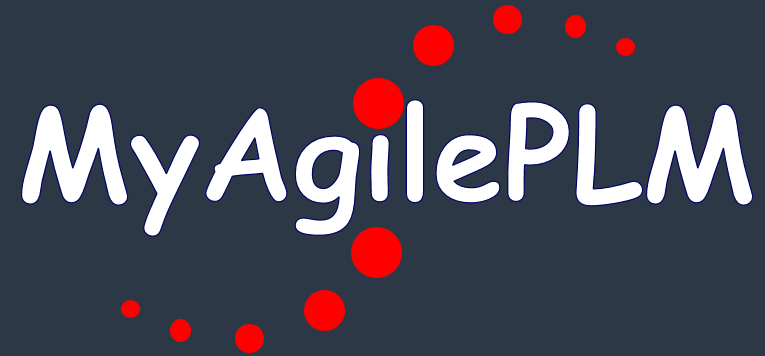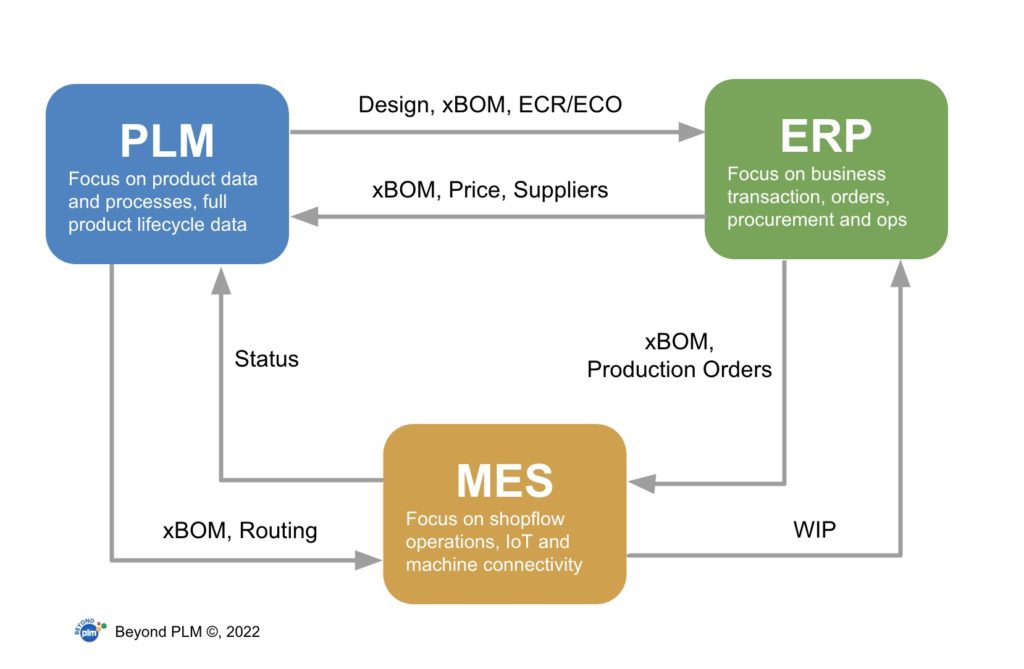
It is no secret that PLM (product lifecycle management) and ERP systems are two of the most important systems within any manufacturing organization. Both systems play a critical role in managing product data and operations, but which system should come first?
For years, the Enterprise Resource Planning implementation priority line was a nightmare for PLM vendor’s sales. A typical answer – is “we are busy with ERP system implementation” or “we already have ERP to manage data”. These answers pull back the PLM sales process and triggerred PLM education campaigns explaining the importance of PLM above ERP.
How to Stop PLM vs ERP Wars?
It looks like PLM vendors never tired to continue their frontal attack on enterprise resource planning software bastions. Earlier last week, I’ve seen a very recent example of the article explaining Why PLM must come before ERP? by Duro Labs indicating the struggle to pass companies’ “ERP police”. Such a confrontation is a big deal for product lifecycle management solutions and I can see how many organizations are struggling with their decisions about how to organize business processes around supply chain management, enterprise resource planning, and product lifecycle management. The complexity is multiplied by the fact that many manufacturing companies already have an existing ERP system. There are many of these systems developed for decades providing specific solutions. The history of enterprise resource planning systems goes back 30-40 years with a lot of legacies, industry best practices, and ERP software packages to cover core business processes. Companies are continuously looking for best practices and examples of how to cover their needs in production planning, and product data management. This search is multiplied by the complexity of products and product value chain and the variety of business functions.
In my earlier articles, I shared my thoughts about PLM vs ERP confrontation. Here are some links for you to catch up.
PLM vs ERP – Change the Battleground
PLM vs ERP – Opportunity to Grow
PLM vs ERP – How to achieve the Synergy
In my view, there are a few interesting things that are happening around PLM vs ERP confrontation. The most important things are related to technological development, cloud web services, and digital transformation. All these things together are changing the way companies will be thinking about PLM, ERP, and other engineering and manufacturing software.
Understanding of Data and Process Landscape
Manufacturing companies are running complex product development, engineering, manufacturing and business processes. These processes are different and dependent on many factors – the type of product and business (eg. Order to stock, configure to order, engineering to order), operation scale, and product complexity (eg. simple products that scale in mass production or highly configurable products. I cannot explain all dependencies and how they impact the choice of PLM, ERP, and MES systems. Nevertheless, I put below a very simplified diagram explaining some typical data and process domains traditionally associated with these systems.
Understanding Company Business and Decision Process
The competition between PLM and ERP is usually a reflection of company business and priorities. After all, the manufacturing business is all about making designs, purchasing parts, making assemblies, and delivering them to the customers. The formula is super simple and complex at the same time. Manufacturing companies are usually pushing toward the results and trying to find the simplest route to ship products, control costs and conform to the regulation, and, at the same time, develop innovative products, deliver competitive advantage and stand for quality standards.
As you can see, none of the goals I mentioned above are specifically focused on PDM, PLM, ERP, MES, or any other software TLA. Manufacturing companies are trying to find a solution that fits their business processes needed, scale, budget, and people preferences. The last is quickly becoming important as new gens of engineers and workers are coming with expectations that quickly take legacy dinosaurs out of the equation when considering what is the right solution. Collaboration plays an increased role as well because businesses are not located in one place anymore and depend on various suppliers and contractors.
So, when manufacturing companies are embarking on a search for software, they are looking at how to solve the problem and not what is the right three-letter acronym. And it brings a lot of opportunities for modern software providers outside of the normal frontal attack to ERP priorities.
Digital Transformation and Web Services
Modern manufacturing companies (from very small to the largest) are looking how to embrace digital transformation as a strategy to change the way they’re doing their businesses. The digital age brings opportunities and allows companies to innovate also technologically (eg. new materials, IoT, embedded software and cloud software, etc) and also from a business side – switching from products to services, offering new business models and other forms of products.
At the same time, PLM, ERP, and MES vendors are also looking how to take advantage of new technologies in business models too. Last decade of SaaS and cloud-based applications open a new way to develop software, provide integrations and deliver services to the customers. Modern applications are instantly available via browsers and mobile devices, don’t require complex installation and tunning processes, and allow to focus on companies’ business instead of “IT wiring”. Don’t misunderstand the importance of IT services too that can be now delivered remotely and with higher efficiency.
Web services allow bringing to companies a desired set of functions without the complexity of PLM vs ERP thinking. Openness and integrations are becoming important decision factors. Web services can be tailored and configured differently for the applications and companies of a different scale.
Pull Out of Legacy and Excel Hell
Digital transformation and focus on modern SaaS applications and web services to deliver desired functions is starting the process of migrating from old legacy and Excel mess. As new services will be delivering new functions, they will be gradually replacing old on-premise software and transforming processes from using zillions of Excel ware to digital twins and digital-thread-based solutions.
What is my conclusion?
Now is the time to put the question of “who comes first PLM or ERP to rest”. Instead, manufacturing businesses should focus on their needs, and functions and discover how they can be delivered by modern digital web services. As businesses will grow, they will be consuming more digital web services, reconfiguring existing ones, and expanding to new web services delivering new functions to answer the needs, product, and business complexity. Such a process will also pull companies out of existing legacy monolithic software and Excel spreadsheet nightmare. It won’t happen overnight, but focusing on openness and agility will allow to companies to get results faster and with less cost. Just my thoughts…
Best, Oleg
Disclaimer: I’m co-founder and CEO of OpenBOM developing a digital cloud-native PDM and PLM platform that manages product data and connects manufacturers, construction companies, and their supply chain networks. My opinion can be unintentionally biased.
The post How To Move Beyond Debates About What Comes First PLM or ERP? appeared first on Beyond PLM (Product Lifecycle Management) Blog.




Be the first to post a comment.